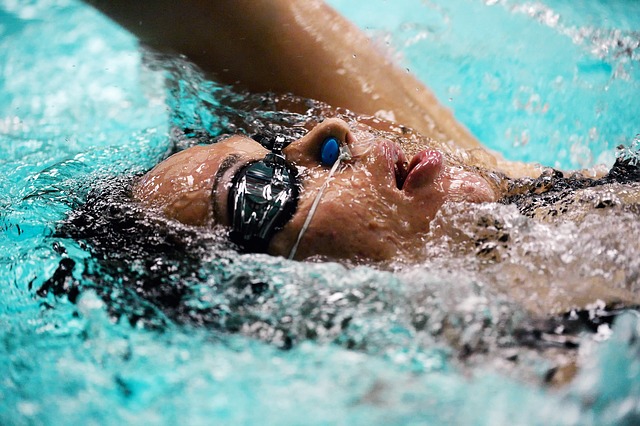 Backstroke swimming technique
Backstroke swimming technique
In today's article, we will focus on the backstroke. It is considered by many to be the easiest of styles, because we still have an exposed face and we can breathe without problems. However, the science itself is simple? It depends, for whom. I remember, that when I was a little boy I was always afraid to swim on my back. I couldn't overcome my fear, because I always thought, that he will drown, and in addition, my body did not want to stay afloat. At least that's what I thought. Always, when I went to the water with my dad, he held me from the bottom, and I moved my legs and so slowly I began to learn, until finally it worked. The most important thing is to overcome fear. You too can get in the water and get to work.
Some history!
- In the beginning, alternating arm movements were performed, and the legs moved as in the classical style (frog).
- W 1902 changed the movement of the legs as used in freestyle (crawl).
- In year 1912 the first backstroke competition was held, which was won by G. Hebner, who used the technique of moving bent arms above the water and the work of straight arms under the water.
- Another change came in 1936 year at the Berlin Championships, when Kiefer won the distance 100 meter. He used the technique of straight arms on the surface of the water.
- After the Second World War, the bending of the arms was introduced during effective movements in the water.
Zads and jacks, and sorry for the pros and cons.
Defects:
- Difficult orientation in the field, because we don't really see, where are we going. That's why we need a lot of focus.
- Complicated self-control of movements and leg placement .
- Difficult to communicate with others.
Advantages:
- No breathing problems, for our head is out of the water, but when we do not skillfully make movements, we can choke on water.
- Easy to learn.
- It relaxes the back muscles and increases their musculature.
- It mobilizes the spine and shoulders to move, thanks to which it improves the body position.
Backstroke swimming technique.
Now we will deal with the backstroke technique. The position, as you all guessed, will be lying on your back with simultaneous movement of your legs and arms. However, in turn. The head and shoulders should be higher than the hip line, because the head is exposed. In addition, we must remember about lateral rotation when moving the arms.
Here we go!
- The straightened arm at the elbow dips behind the head. We immerse the whole hand in the water remembering, that the palm is to be directed to the surface of the water with the little finger.

- Then the arm goes down the water and when it is at the right depth approx 17 centimeters we move forward.
- Hand, which is in the water and we move forward, bend at the elbow and straighten at the thigh.
- Remember, make this movement strong and effective.
- Turn your thumb to the surface of the water and bring your hand up.
- We begin to move the arm straight above the head again, we remember about the rotation of the hand, so that the little finger is immersed first.
- Remember about continuous and strong footwork.
Don't forget to warm up before swimming. Feel free to comment.